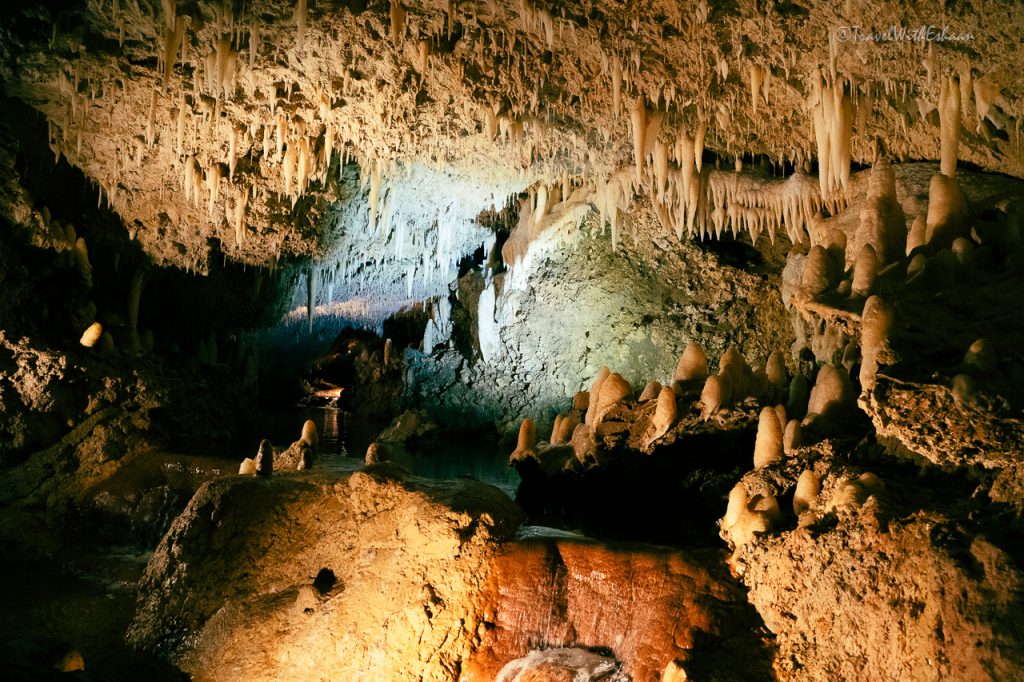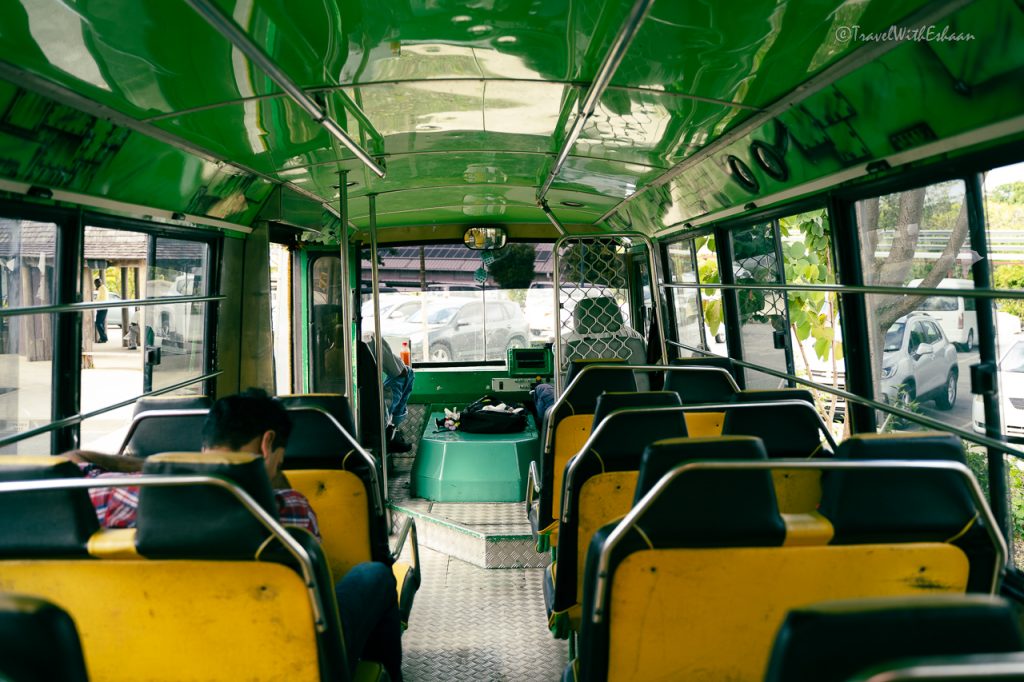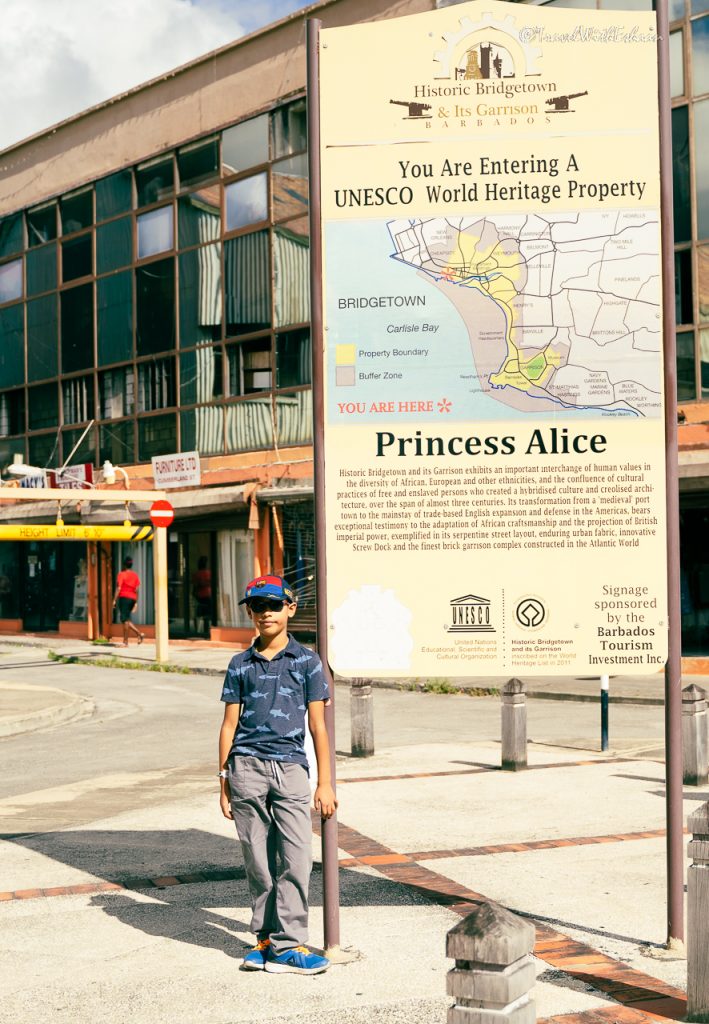
Barbados is unique. Especially geologically. While the rest of the Antilles are formed by volcanic rock, Barbados is formed by coral rock. It’s location on the boundary between the Caribbean and South American plates created a hole, exposing lava. That eventually raised the land to the point where coral grew. When the coral got compressed and layered over the years, Barbados was formed. Because of this, Barbados is the easternmost country in the Caribbean, and it has formed some interesting land features, such as the Harrison Caves, one of the only caves in the Caribbean.
The Harrison Caves would be our first destination on our trip. It was quite far from Bridgeport, the capital of Barbados, so we took a city bus. The stop was about a mile away, and so we walked to the stop. After a half-hour drive, we were there. Outside of the cave entrance, there was a botanical garden, so we enjoyed the flowers of paradise before going into the entrance. We were given hard hats and instructions, and then we were to enter the caves.
The caves were sort of like a mine. The entrance was indoors, but after the interior, you could access the cave. We were put into a cart, and then were rolled into the caves. It was kind of like an underground roller coaster ride, but slower. The caves themselves were captivating. The landscape in caves is otherworldly, and I can see why spelunking is a popular pastime.
We were taken deeper and deeper into the caves, seeing stalagmites and stalactites, the occasional pool of water in sight.
Leaving took much longer than anticipated since the bus didn’t arrive on time. We faced more delays as the bus driver suddenly stopped the bus halfway through the journey to eat lunch. None of the locals were concerned, however, and someone joked “We’re on island time”. The side of the bus was decorated with a quote: “God Bless Fat Child”. The goal of the saying was to reduce obesity, as the fat child needs god’s help against disease. In many places, obesity is a bigger problem than starvation.
The next stop on the tour bus was a beach on the southeast of Barbados. It held the Caribbean standard, with picture-perfect waters, and fine white sands, but we didn’t stay for long. Barbados is much more than beaches.
Instead we returned to Bridgeport, the beautiful capital of Barbados. There, we could see the colonial harbor, and the parliament building, a fortress-like building which might’ve helped govern the country during its former British times. There we visited a chocolate store, with some information about the types of chocolate. We also saw James Fort, which was actually a prison. It fell into disrepair, and many people escaped.
We came across another wild Barbados story while visiting the Princess Alice UNESCO World Heritage site: the rise and fall of the plantation island. At one point Barbados was the most valuable British asset due to its massive swathes of arable land, suitable for profitable sugar plantations. To work them, the British brought indentured servants and prisoners from Britain, and slaves from Africa. After a while, land ran out on the small island nation, and after sugar prices plummeted, it no longer became desirable to work in the plantations, and as a result, emigration skyrocketed, especially to the Carolinas and Virginia. Another round of emigration began after independence, when many Barbadians moved to the United States. Immigration is deeply rooted in Barbadian history. During Covid-19, Barbados has opened their arms to foreign remote workers, while other nations closed their doors. It’s not a surprise considering Barbados has volumes of history on emigration and immigration.
Bridgeport is a great city to visit, and I highly recommend walking around if you ever visit Barbados. Unfortunately, we had to leave, as sunset was setting in, and we were hungry. We returned to the cruise, and just like that, the day was over.
Tips:
- Visit Harrison Caves: A lot of people skip Harrison Caves, but the caves are a unique experience, while going to the beach is a matter of time in the Carribean.


